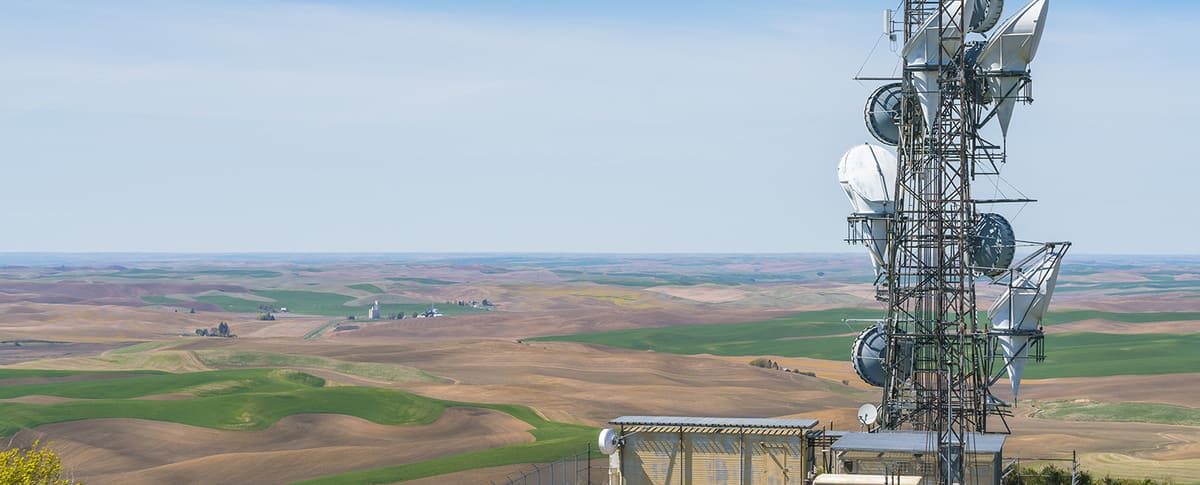Different Types of Telecom Tower in India

As mobile subscribers surge in India, the demand for seamless connectivity rises. Telecommunication towers, commonly known as mobile towers, play a pivotal role in meeting this demand. Positioned strategically, these towers ensure widespread coverage, bridging connectivity gaps in both urban and rural areas. There are several benefits of telecom towers including optimising bandwidth, handling increasing data traffic, minimising call dropouts, and enhancing the overall user experience. Moreover, these towers support advanced technologies like 4G and 5G, ensuring faster data speeds and preparing the infrastructure for future advancements. Reliable telecom tower suppliers provide these essential structures, making mobile towers indispensable for creating a robust and evolving communication network in India.
Different types of Telecom towers
Lattice Tower
Lattice towers, commonly known as "self-supporting towers," play a crucial role in modern infrastructure. These versatile structures, crafted with triangular and rectangular base steel, are not only freestanding but also highly adaptable to different needs. Designed to accommodate modifications, lattice towers are ideal for connecting dish antennas, multiple panels, and various attachments essential for network towers and telephone towers. Lattice towers excel in heavy-load electricity transmission, where their robust construction and self-supporting design prove invaluable. Additionally, they serve as radio towers, facilitating widespread signal transmission, and observation towers, offering panoramic views for surveillance, meteorology, and tourism.
Tubular Tower
Tubular steel towers, also known as mobile tower structures, are engineered for high-load applications in telecommunication. Crafted with seamless tubular sections, these towers ensure robust strength, making them crucial components for reinforcing network reliability. Installed strategically in deserted areas on the outskirts of cities, they contribute to expanding the network spectrum and enhancing connectivity. In the domain of telecommunication towers, these structures play a vital role in providing seamless and reliable network coverage, addressing the demands of both urban and remote areas.
Angular Tower
It is preferred for small towers that have a lighter load than other towers. Angular towers are comparatively cost-effective and are mostly installed on rooftops.
Ground-Based Tower
Ground-based towers are positioned with a sturdy foundation and form a vital part of modern telecommunication networks. Ranging from 30 to 200 meters, these towers, including the standard 40-meter variant, provide essential vertical reach for optimal signal transmission. Their versatility is evident in their ability to support up to 12-panel antennas and three 0.6-meter-diameter microwave solid dish antennas. Ground-based towers are distinguished by their competitively higher load-bearing capacity, ensuring stability and reliability in supporting multiple antennas and communication equipment.
Rooftop Towers
Rooftop towers, also known as rooftop pole towers, are a specialised category of telecom rooftop towers. These structures stand as integral components of urban telecommunication infrastructure. Expertly installed above the roofs of high-rise buildings, these towers feature raised columns and tie beams for a seamless blend with the architectural landscape. With heights ranging from 9 to 30 metres, rooftop pole towers are flexible and can fit well in different city spaces where there might be limited room. In the urban landscape, where space optimisation is crucial, rooftop pole towers play a pivotal role in optimising signal coverage. Their unique design and height flexibility, coupled with the precision of rooftop installation, embody a harmonious fusion of functionality and urban aesthetics.
You May Like: What is the Procedure of Mobile Tower Installation?
Factors That Impact Tower Design
Telecom towers, the backbone of modern communication networks, come in various forms such as ground-based, rooftop, and lattice towers, each specifically designed to meet unique structural and functional requirements. Understanding the factors that influence their design is crucial for optimising their performance and ensuring seamless connectivity.
- Geographical location and population density of the area.
- Aerial height requirement for the installation of each system.
- The direction of the antennas.
- Size and weight of each element that is installed with the tower, such as feeders or cables.
- Possible future extension.
- Cost of maintenance.
- Aesthetic appearance
Utkarsh India's Tower Solutions
- Our multi-shed manufacturing facility efficiently handles multiple and larger orders, including those for mobile communication towers, contributing to our versatile production capabilities.
- PGCIL-certified installation capacity for Angular towers, vital for the telecom industry, stands at 30400MT per year.
- With an installed production capacity exceeding 24000 MT, we cater to the manufacturing needs of various structures, including mobile communication towers.
- Our pipe rolling facility, crucial for telecom towers, supports different sizes, ensuring minimal manufacturing lead times for projects across India.
- State-of-the-art CNC machines play a pivotal role in the swift completion of multiple operations, enhancing our efficiency in producing telecom and mobile communication towers.
- Our well-connected logistics network, essential for the mobile tower industry in India, ensures PAN India material delivery with tracking and security. This process is executed by a highly trained team adhering to SAP standards, minimising delays and errors in the entire project lifecycle—from customer acquisition to project completion.
Conclusion
The strength and rigidity are the key factors to consider while installing a telecom tower. Utkarsh India adheres to the guidelines issued by TEC for both ground-based towers and rooftop towers for meeting safety standards.
Utkarsh India takes pride in manufacturing a diverse range of products, ranging from 9M rooftop power to 60M ground-based tower. The company provides a complete solution for telecom towers, starting from design, to manufacturing, and supply of towers.